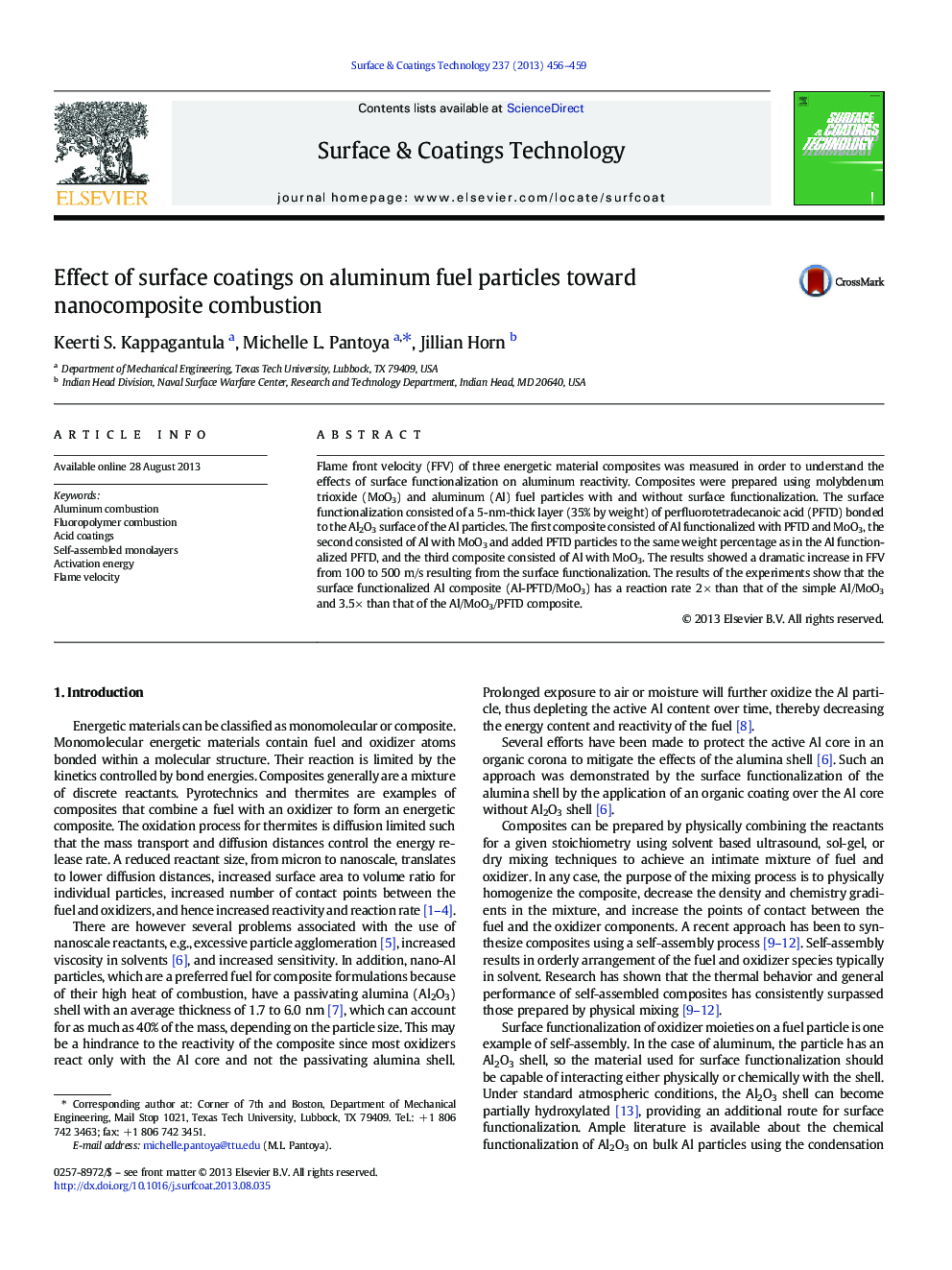| Article ID | Journal | Published Year | Pages | File Type |
|---|---|---|---|---|
| 8028804 | Surface and Coatings Technology | 2013 | 4 Pages |
Abstract
Flame front velocity (FFV) of three energetic material composites was measured in order to understand the effects of surface functionalization on aluminum reactivity. Composites were prepared using molybdenum trioxide (MoO3) and aluminum (Al) fuel particles with and without surface functionalization. The surface functionalization consisted of a 5-nm-thick layer (35% by weight) of perfluorotetradecanoic acid (PFTD) bonded to the Al2O3 surface of the Al particles. The first composite consisted of Al functionalized with PFTD and MoO3, the second consisted of Al with MoO3 and added PFTD particles to the same weight percentage as in the Al functionalized PFTD, and the third composite consisted of Al with MoO3. The results showed a dramatic increase in FFV from 100 to 500Â m/s resulting from the surface functionalization. The results of the experiments show that the surface functionalized Al composite (Al-PFTD/MoO3) has a reaction rate 2Â Ã than that of the simple Al/MoO3 and 3.5Â Ã than that of the Al/MoO3/PFTD composite.
Related Topics
Physical Sciences and Engineering
Materials Science
Nanotechnology
Authors
Keerti S. Kappagantula, Michelle L. Pantoya, Jillian Horn,
